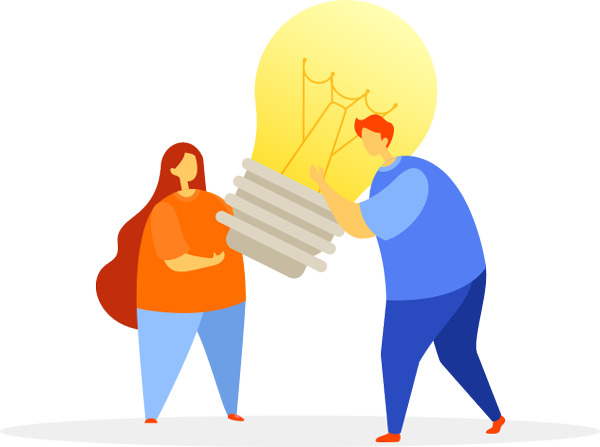In a world of curves and chaos, square and rectangular logos stand firm. They prove that structure never goes out of style, especially when your brand’s foundation is built on clarity and confidence.
Some logos feel dependable the moment you see them. They don’t rely on clever tricks or wild shapes — just clean lines and balanced structure. That’s the quiet strength behind rectilinear logos, those built from square and rectangular forms defined by straight edges and right angles. They bring a sense of order to a visual world that’s often all over the place.
Such shapes don’t fight for attention; they earn it by being solid, grounded, and clear. A square suggests balance and equality, while a rectangle adds a touch of movement and direction.
Together, they create the kind of visual harmony that makes a brand look trustworthy and professional.
Designers love them because they’re predictable in the best possible way. You can align elements, build symmetry, and still keep things interesting through color and typography. For brands, that balance translates to dependability and strength without needing to spell it out.
Let’s break down why these geometric staples never go out of style and how they give brands that confident edge people instantly respond to.
The Psychology Behind Square and Rectangle Shapes
When you strip design down to its essentials, shapes are one of the first things our brains respond to, even before color or text. In the psychology of shapes in logo design, few forms communicate stability and trust as clearly as squares and rectangles. These geometric shapes appeal to our sense of order; their straight edges and balanced proportions create instant visual harmony. That’s why they often appear in logos for brands that want to look dependable, structured, and confident.
Here’s what each shape tends to represent psychologically:
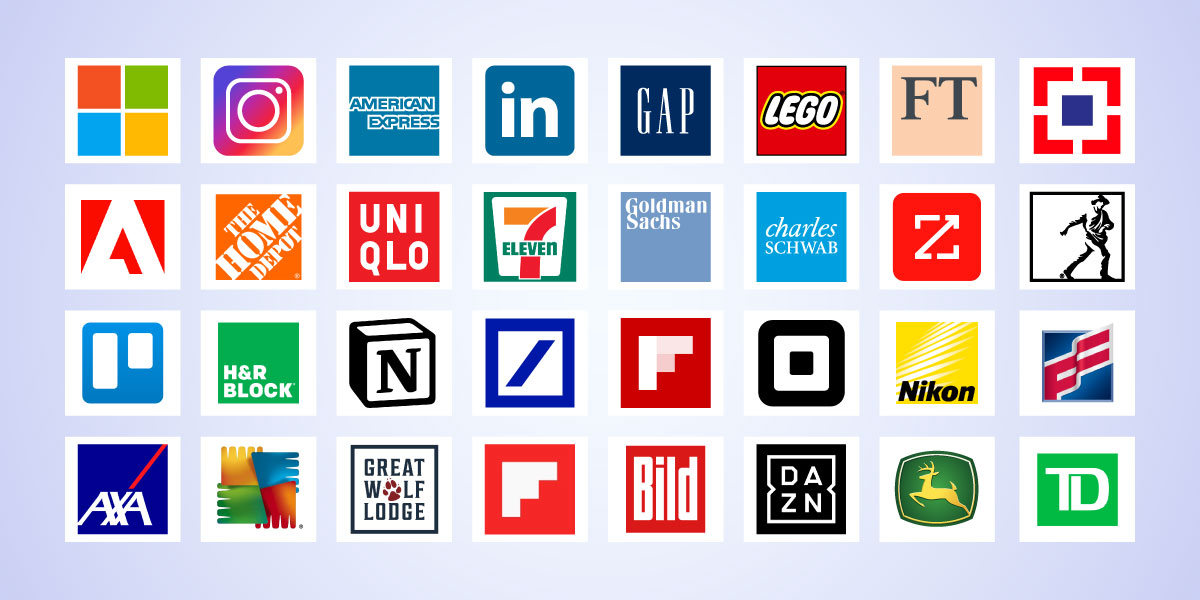
- Square: Balance, equality, and reliability. The even sides make it feel secure and fair — nothing is out of place or unpredictable.

- Rectangle: Strength, professionalism, and direction. Its extended form adds movement and purpose while still maintaining that grounded, structured feel.
Both shapes reflect discipline and control, qualities that reassure audiences. This straightforward geometry builds trust by showing the brand values clarity, fairness, and structure over flashiness or chaos.
What Rectangle and Square Logos Communicate About a Brand
Every shape tells a story. For example, circles mean stability, triangles mean power, and as for squares and rectangles, the story revolves around strength, structure, and reliability. Their structured form adds a quiet strength for brands that want to appear confident and send a message: “We’ve got it in control.”
• Trust and Security
Squares and rectangles read as contained and reliable. In visual terms, they create a “box” that holds information; this containment signals safety and predictability. That’s why industries that sell confidence (banking, insurance, industrial services) often favor these shapes: they reduce visual uncertainty and make complex services feel manageable. Designers use tight grids, even padding, and restrained type inside these shapes to reinforce the brand message.
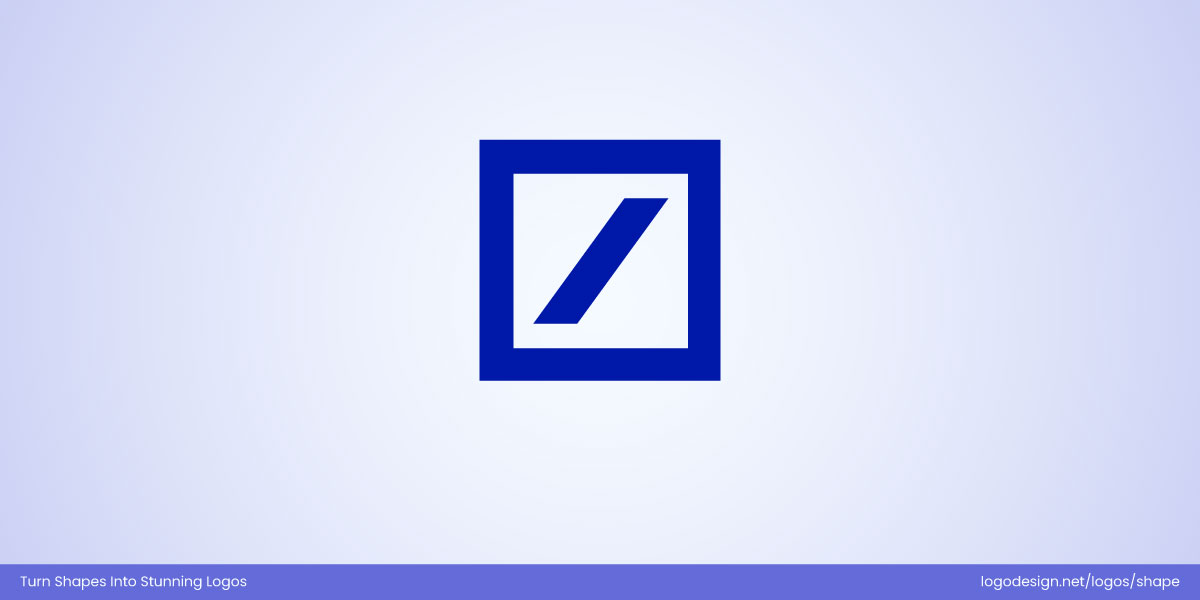
A strong example is Deutsche Bank. Its logo is a simple square frame with a diagonal slash that visually captures the idea of stability and forward movement. The square’s containment evokes reliability, while the diagonal suggests progress, perfectly aligning with the trust-based nature of financial services.
• Professionalism and Structure
Right angles communicate order. Rectangles mimic documents, nameplates, and screens, all things associated with formal process and authority. When a logo sits neatly in a rectangular field, it reads as organized: alignment, hierarchy, and rhythm are visible at a glance. That makes the shape a natural fit for consultancies, architects, and B2B services where demonstrating systems and repeatable results is part of the value proposition. Subtle grid-based rules in the logo extend that impression across websites, reports, and presentations.
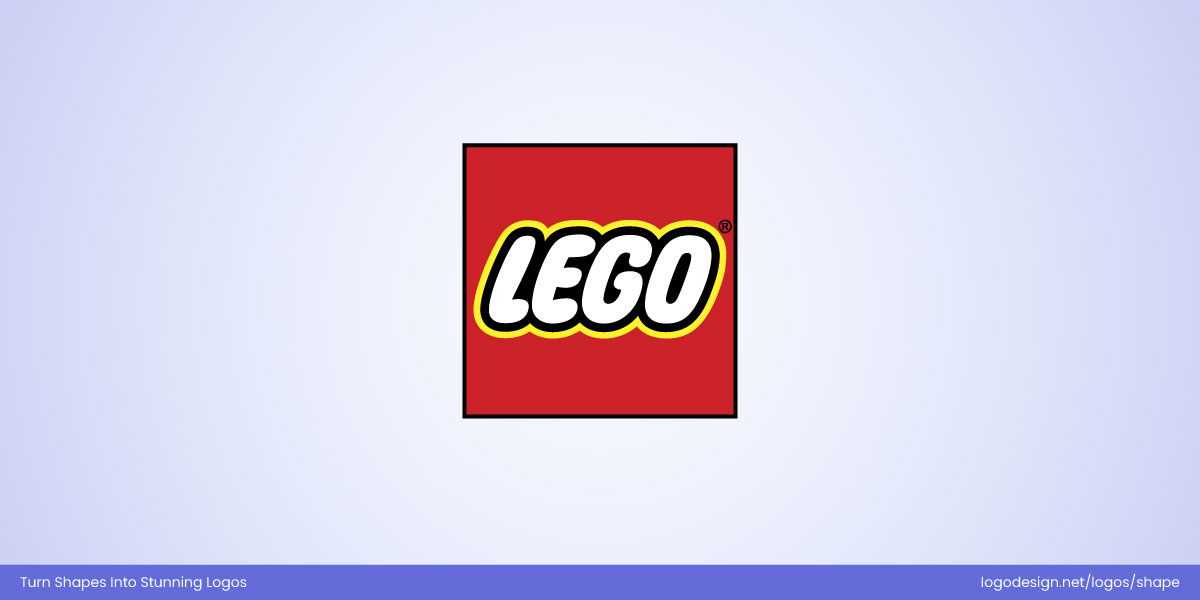
Take LEGO, whose logo is neatly contained within a bold red square. Even with its playful market, the structured frame gives the brand a sense of professionalism and order. The simple square logo design reflects how a system built for creativity can still feel stable, methodical, and thoughtfully engineered.
• Simplicity and Clean Design
Squares and rectangles strip the composition to essentials: field, mark, and type. That simplicity in design makes it easier to control white space, to place a focal point, and to avoid visual clutter. Minimalist brands pick these shapes because they pair cleanly with restrained palettes and geometric typography, producing a tidy, modern look that’s legible in small sizes and fast to process.

Uniqlo exemplifies this. Its bright red square with crisp white lettering is as minimal as it gets — no gradients, no extra flourishes. The logo’s geometry and contrast make it instantly readable and adaptable across global markets, embodying modern simplicity at its finest.
• Versatility and Scalability
Squares and rectangles are predictable across contexts: they crop well for favicons, tile neatly in social grids, and translate to physical signage with minimal rework. Their stable aspect ratios mean designers can scale the mark up for a storefront or down for an app icon without surprising composition shifts. Because these shapes line up with interface grids and packaging templates, they lower production friction across touchpoints — fewer alternate versions, fewer layout headaches. That practical flexibility is a major reason startups and product companies choose them.

The BBC logo is a textbook case. Its three black squares, each housing one letter of the name, maintain perfect clarity across every platform—from mobile screens to television broadcasts. The modular design ensures visual consistency regardless of scale or medium.
• Memorability and Recognition
A compact geometric silhouette is easier to remember. Squares and rectangles create simple negative-space relationships that register quickly in the brain, even when color or type changes. Because these forms are visually stable, minor brand gestures (a notch in a corner, a unique baseline treatment, a colored stripe) become distinctive signals layered on top of a familiar frame. That combination: simple container + single unique detail is a powerful route to recall without overcomplication.
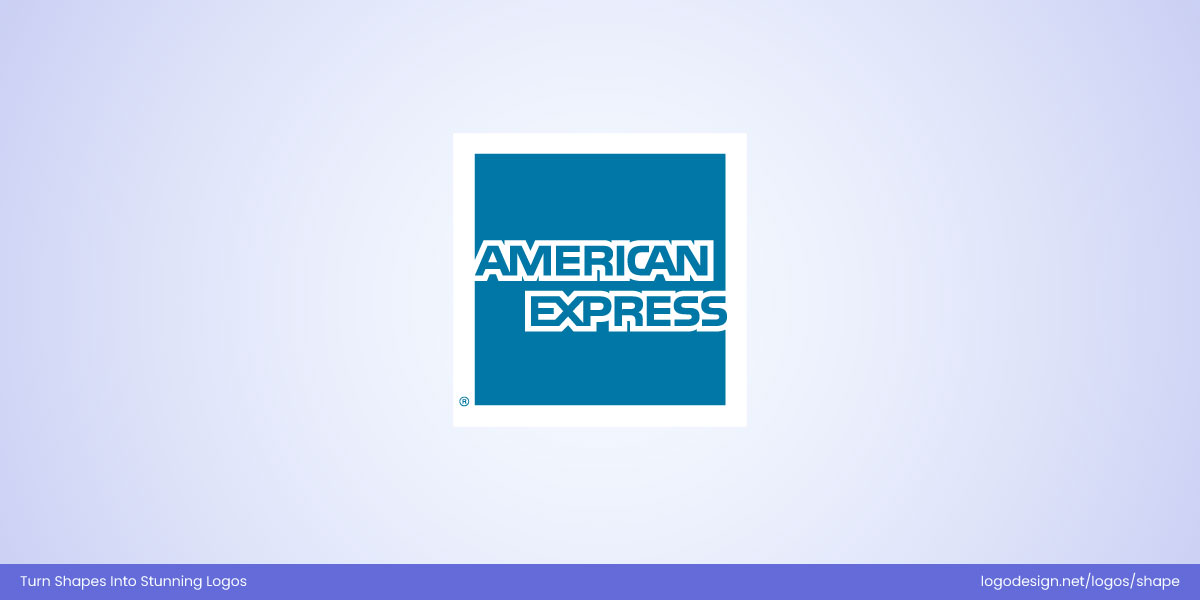
American Express perfectly demonstrates this principle. Its logo with a blue rectangle frame and centered typography, is instantly recognizable worldwide. Even when used in monochrome or embossed on a card, the structured box shape and confident lettering maintain its memorability and authority.
Industries That Commonly Use Square and Rectangle Logos
Certain industries, including technology, finance, and construction, naturally gravitate towards square or rectangular logo designs because these shapes align with their core values. Whether seen on a screen or a building façade, the clean geometry of these logos helps brands appear grounded and trustworthy. Just as industries use different colors to convey emotion and personality, they also rely on distinct shapes to express stability, precision, or innovation.
Let’s look at how different industries make these geometric forms work for them.
• Technology & Software
In the tech world, clean lines and modular forms are design choices that reflect the logic and structure that power digital systems. Square and rectangular logos communicate precision, modernity, and balance. They are perfect for brands that want to appear cutting-edge and dependable. Squares and rectangles are used by top technology logos, such as the following.
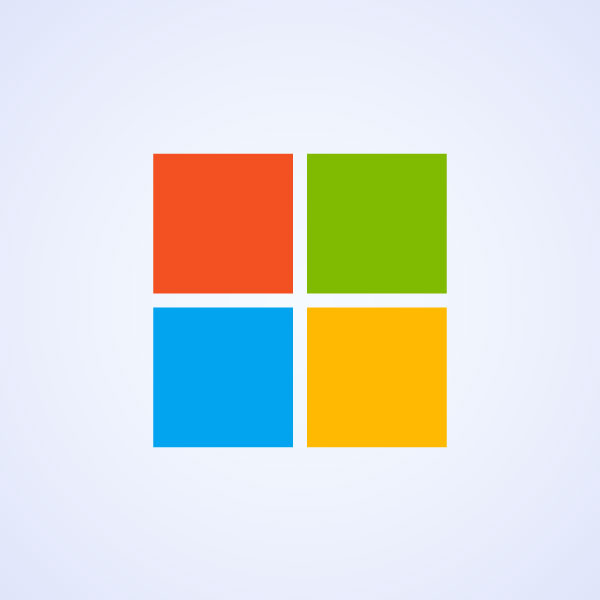
Microsoft’s four-square window logo perfectly captures balance, diversity, and unity. Each colored pane symbolizes a different product ecosystem working in harmony. The rectilinear form reflects the company’s commitment to consistency and connected experiences.

Lenovo’s wordmark rests inside a bold rectangular block, turning simplicity into strength. The frame gives it a grounded, professional presence that reflects reliability and confidence. Its structured form mirrors the brand’s focus on practical, high-performing technology.

Hewlett Packard Enterprise’s logo features a simple rectangular outline — a minimalist frame that captures focus and precision. The clean geometry communicates stability, clarity, and professionalism. It’s a modern symbol of structure and dependability in enterprise technology.
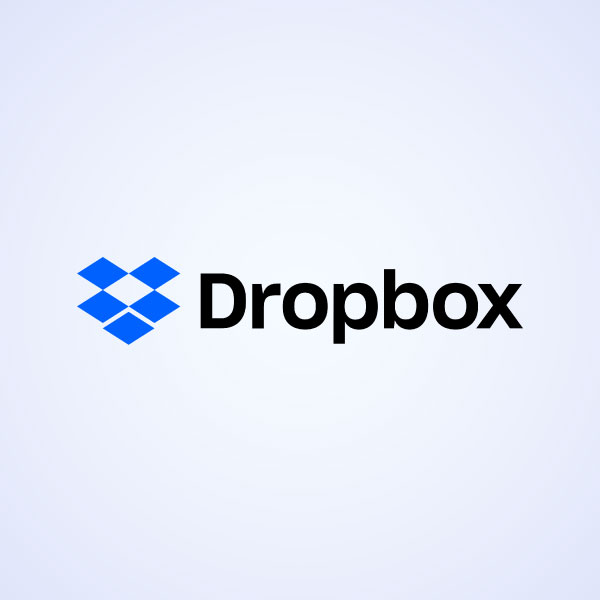
Dropbox’s folded-box symbol transforms a square into a container for ideas, structure, and simplicity. The geometric precision conveys organization and dependability — essential qualities for cloud storage. Its design makes digital storage feel both tangible and trustworthy.
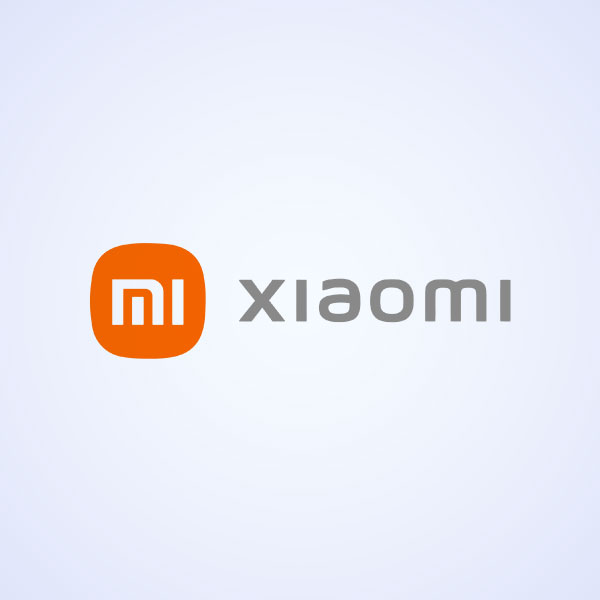
Xiaomi’s soft-edged square, or “squircle,” brings approachability to modern tech minimalism. The shape blends structure with friendliness, suggesting technology that’s stable yet human-centered. Its vibrant orange hue reinforces optimism and accessibility within a reliable frame.
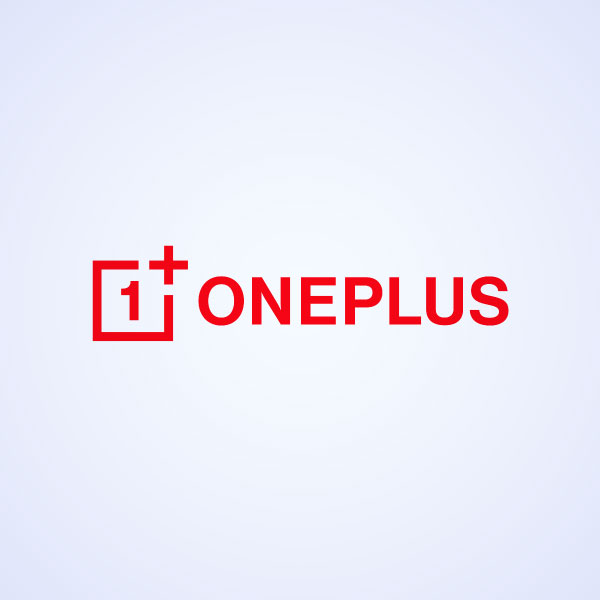
The OnePlus emblem, framed within a compact square, unites logic and creativity. Its combination of symbols — the “1” and “+” — forms a balanced visual system that feels both mathematical and dynamic. The squared design reflects the brand’s precision, clarity, and pursuit of seamless performance.
• Finance, Banking & Fintech
Financial brands have long used squares and rectangles to signal strength, fairness, and transparency. Their logos often look like seals or stamps, which are structured, contained, and consistent, reinforcing the message that your money (and trust) is in safe hands.
Below are a few popular finance logo examples.
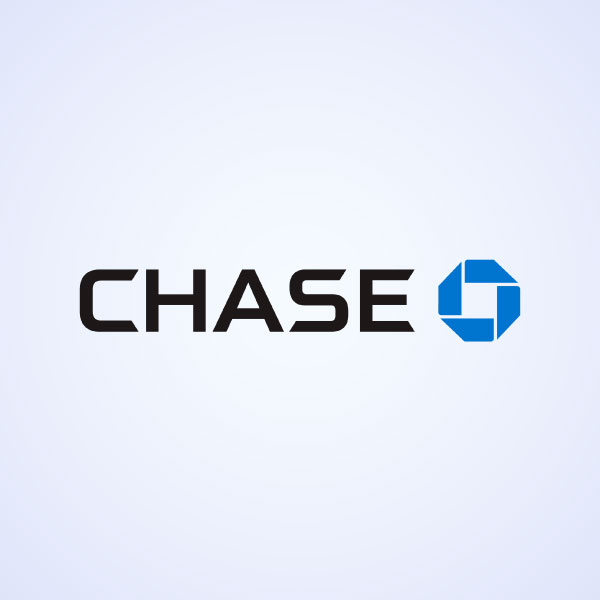
Chase Bank’s square-inspired octagonal emblem, built from trapezoids, is all about trust and precision. Its geometric rigor mirrors the predictability and accountability expected from a financial institution. Whether embossed on credit cards, displayed on ATMs, or featured in digital ads, the logo’s square frame conveys a sense of reliability and permanence.
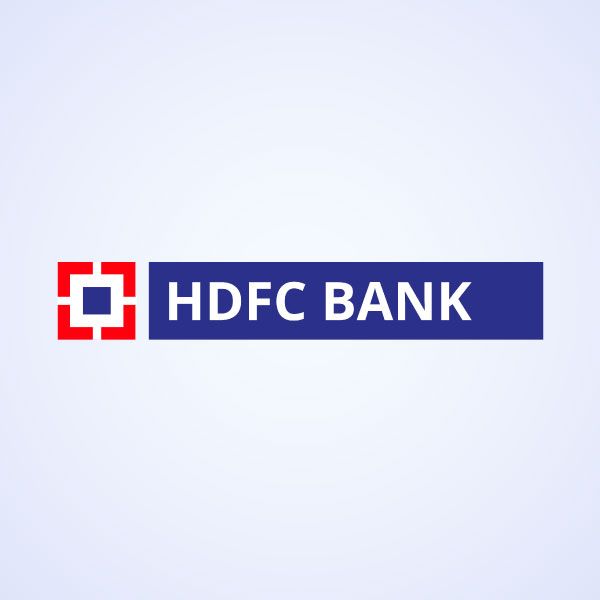
HDFC Bank’s rectangular emblem, bordered in red and blue, represents structure and resilience. The rectangular form acts like a frame of stability, symbolizing strength and reliability. Its balanced geometry reflects the bank’s disciplined approach to growth and customer trust.
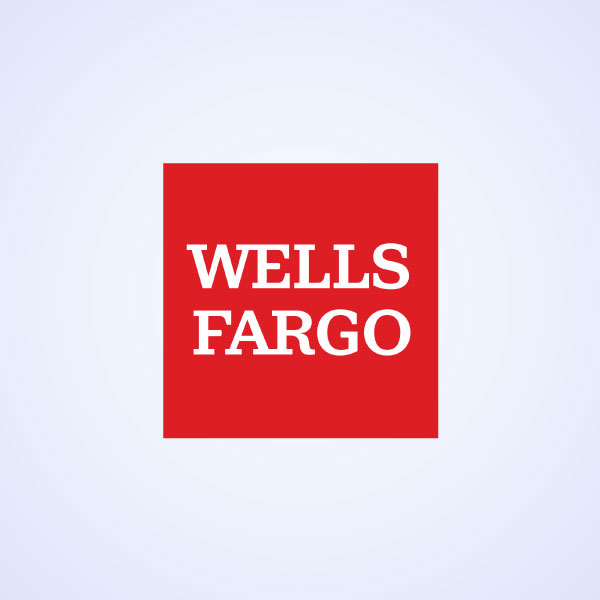
Wells Fargo’s red rectangular logo evokes tradition and strength within a modern framework. The sturdy, no-nonsense shape suggests durability and trust, while the confident typography signals authority. The rectangle anchors the brand’s historic values in a clean, timeless design.

First Citizens Bank features a rectangular layout with strong horizontal divisions and bold typography. The structured form suggests transparency and balance, two values that reflect the brand’s emphasis on reliability and long-term relationships. Its linear geometry creates a sense of order and professionalism — essential in banking.

Bank Hapoalim uses a striking red square beside its wordmark, projecting simplicity and strength. The compact geometric symbol communicates trust and stability, grounding the brand’s identity in confidence and clarity. It’s a visual shorthand for the bank’s solid reputation and dependable service.

TD Bank’s green square logo embodies security, consistency, and clarity. The contained design feels stable and reassuring, making it instantly recognizable across signage and digital platforms. Its bold simplicity reinforces the brand’s promise of straightforward, dependable financial services.
• Construction, Real Estate & Architecture
In industries built on literal foundations, geometric shapes carry symbolic weight. Square and rectangular logos in construction and architecture represent balance, form, and physical stability — qualities that mirror the work these companies do every day.
Let’s look at some examples.
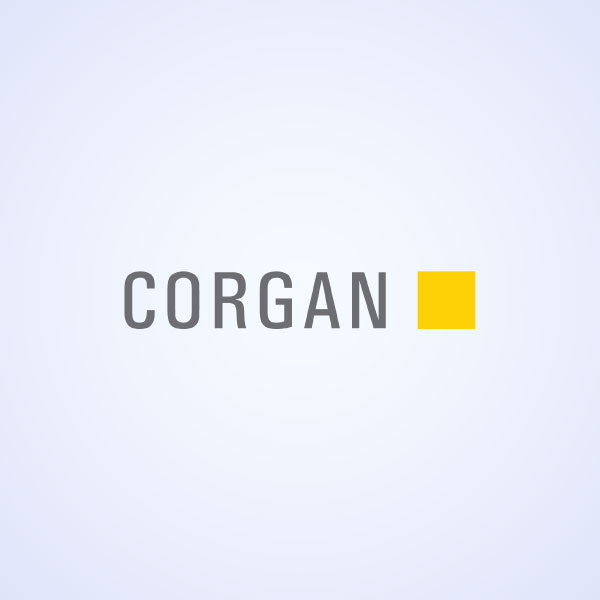
Corgan’s clean, rectangular wordmark captures a modernist sensibility rooted in precision and balance. The shape’s horizontal orientation feels expansive yet structured, aligning with the firm’s focus on functional beauty and thoughtful architectural form.
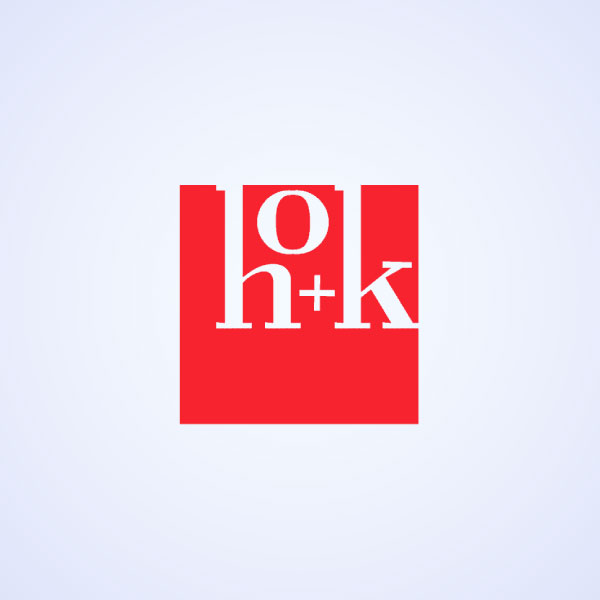
HOK’s minimalist square logo design embodies architectural order and refinement. The compact, red block with white lettering conveys creativity within structure — a perfect reflection of HOK’s design philosophy that balances aesthetic innovation with engineered precision.

Hilti’s bold logo with a red rectangle perfectly captures the brand’s identity as a maker of construction tools built for endurance. The logo’s solid block form reflects the strength and solidity of its products, while the clean, white typography reinforces precision and dependability.
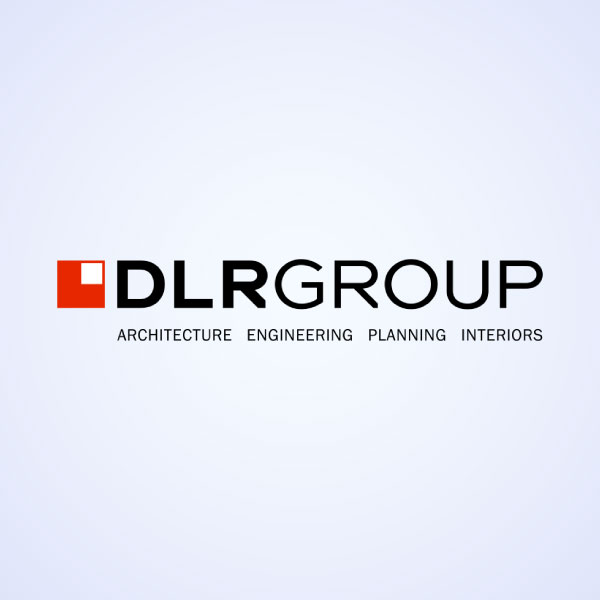
DLR Group’s logo uses a square, badge-style emblem in many contexts, often alongside or above the wordmark. That square badge gives the brand a structured, balanced appearance that works well in architectural renderings, signage, and printed materials. The square container helps unify the emblem and name, reinforcing a sense of stability and design precision.
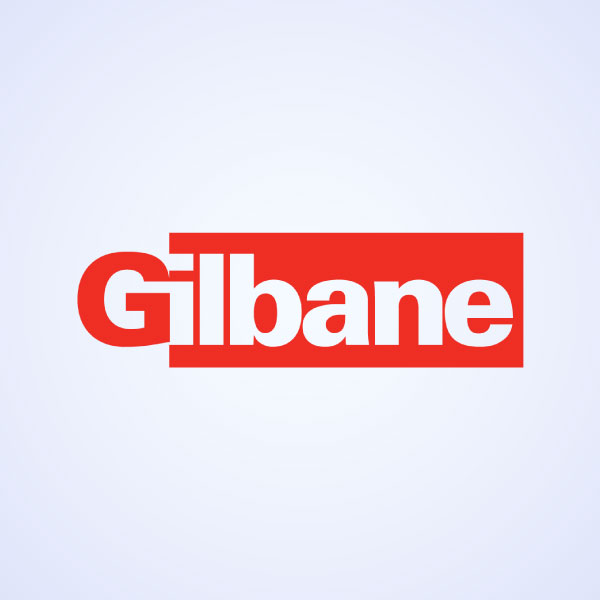
Gilbane’s solid red rectangle acts as a foundation for its bold white wordmark, visually mirroring the brand’s focus on stability and long-term durability. The strong horizontal block gives the logo a grounded, architectural presence that communicates confidence and trust.

Clark Construction’s rectangular blue logo delivers a sense of dependability and tradition. The box-like structure emphasizes strength and stability — key values in building and infrastructure — while the white typography adds clarity and modern professionalism.
• Media, News, & Publishing
For media and publishing, square and rectangular logos project credibility, balance, and authority. Their clean geometry mirrors the layout of screens and print columns, symbolizing structured information and editorial integrity. This shape gives news brands a visual frame of trust and neutrality in a crowded, fast-moving information space.

Simon & Schuster’s rectangular logo layout, often featuring its name in a crisp serif typeface beside the classic “Sower” emblem, reflects structure and tradition. The rectangular arrangement gives the brand a sense of authority and balance, aligning perfectly with its identity as a long-standing publisher of literary excellence.
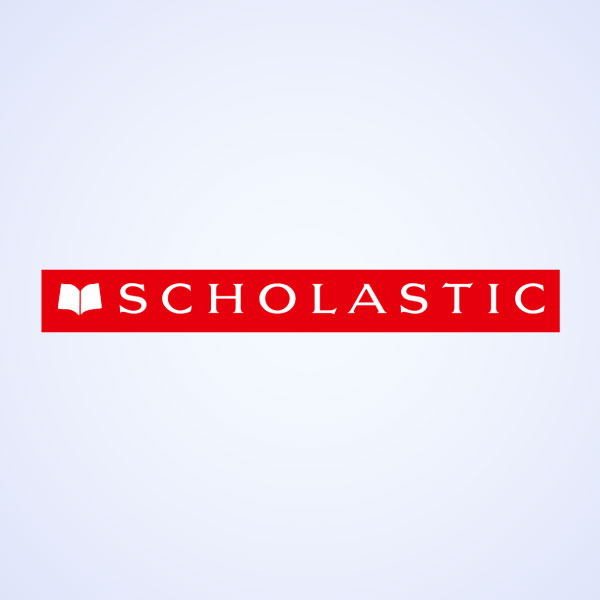
Scholastic’s bold red rectangle with a white open-book icon is one of the most recognizable shapes in publishing. The rectangular banner format conveys stability and trust, while the bright red energizes the brand with warmth and accessibility — echoing its mission to make reading inviting for young audiences.
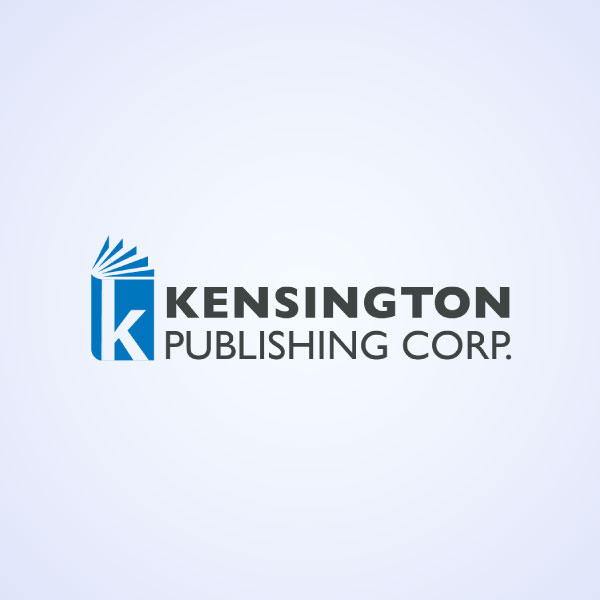
Kensington Book Publishing uses a rectangular logo, with its strong typography and minimal embellishments, which radiates professionalism and confidence. The rectangular form feels like a book spine — compact, upright, and orderly — symbolizing structure, permanence, and the timelessness of printed stories.
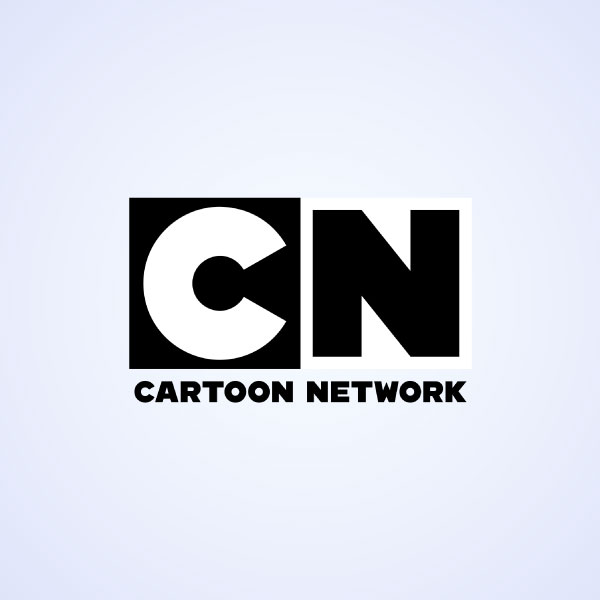
Cartoon Network’s checkerboard-inspired square logo cleverly balances playfulness and order. The alternating black-and-white squares communicate rhythm and visual balance, while the grid structure reflects creativity contained within clarity — mirroring the channel’s mix of imagination and consistency.
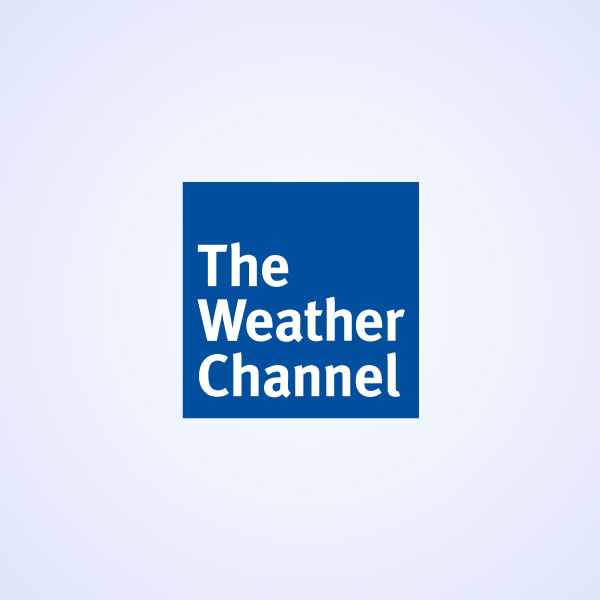
The Weather Channel’s blue square logo delivers a clean and dependable look, reinforcing clarity and trust — essential traits for a source of real-time information. The square container frames the brand like a digital screen, projecting authority, stability, and calm amid unpredictable conditions.

VH1’s rectangular logo uses clean lines and modular composition to capture a blend of modernity and nostalgia. Its structured form acts as a visual stage — stable yet adaptable — echoing the network’s evolution from classic music storytelling to contemporary entertainment with a consistent identity.
• Retail & E-Commerce
In retail and e-commerce, square and rectangular logos convey clarity, reliability, and structure. Their balanced form fits seamlessly on packaging, websites, and mobile screens, reinforcing a sense of order in fast-paced shopping environments. The shape helps brands appear trustworthy and organized, guiding customers toward confident purchase decisions.

The Home Depot’s bold orange square logo feels as sturdy as the products it represents. The square frame and diagonal text layout project energy within order — a visual nod to construction grids and warehouse labels. Its box-like form symbolizes reliability, structure, and hands-on practicality — core traits of a home improvement giant.
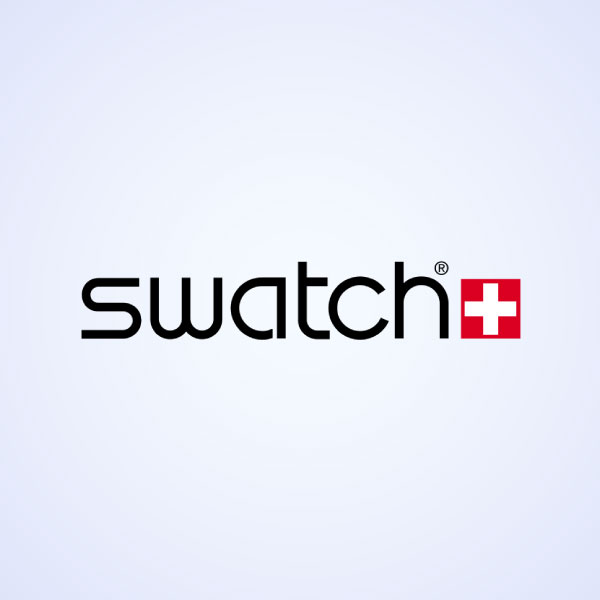
Swatch’s rectangular logo with its neat lowercase typography and Swiss cross emblem balances modernity with heritage. The rectangular layout provides clarity and precision — qualities deeply associated with Swiss design — while the compact form communicates efficiency and sleekness, mirroring the brand’s minimalist watch aesthetics.
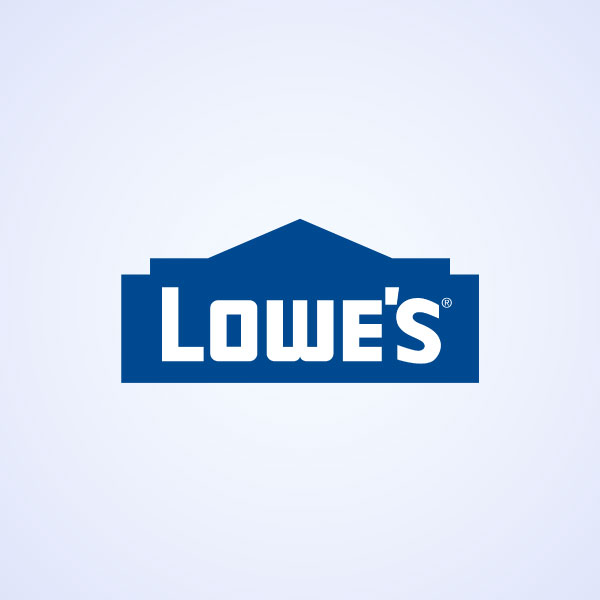
Lowe’s logo, structured within a house-shaped rectangle, evokes stability and shelter. The geometric form blends strength with approachability, emphasizing trust and dependability — traits vital for a home improvement retailer. Its rectangular proportions echo blueprints and architectural foundations, reinforcing the brand’s construction roots.

IKEA’s blue and yellow rectangular emblem is as iconic as its flat-packed furniture. The clean, boxy frame encapsulates function and efficiency, while the bold typography communicates confidence. The rectangular shape mirrors the brand’s practical, modular design philosophy — everything fits neatly in its place.
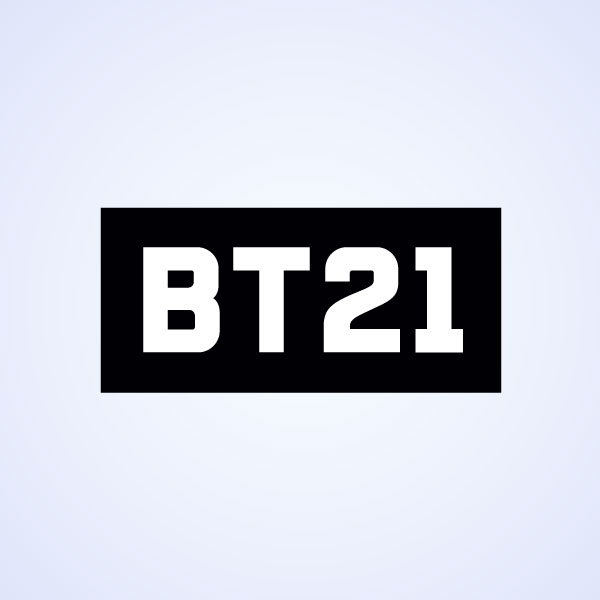
BT21’s minimal rectangular logo — clean lines, tight letter spacing, and monochrome contrast — captures a modern, digital-friendly aesthetic. The structured box design balances youthful energy with professional clarity, making it adaptable across packaging, merch, and online platforms. It’s order meeting playfulness in perfect proportion.
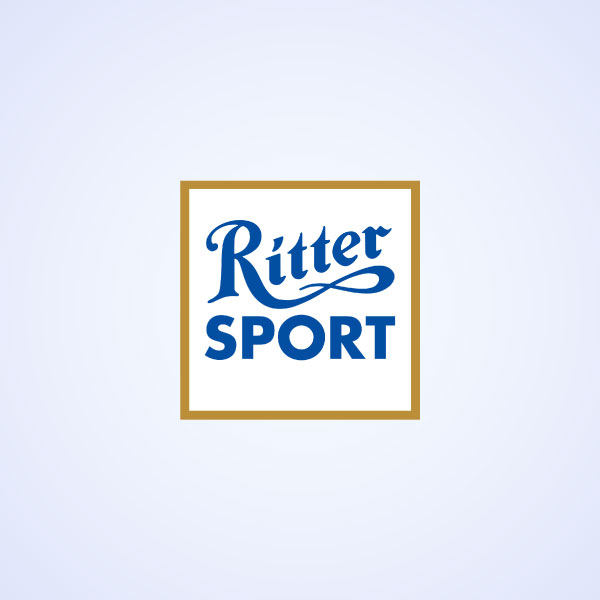
Ritter Sport’s square logo is a masterclass in form reflecting function. The perfect square echoes the brand’s chocolate bar shape, creating instant recognition. Its crisp geometry conveys precision, quality, and uniformity — characteristics that reinforce the brand’s commitment to craftsmanship and consistency.
The Many Faces of Square and Rectangle Logos — and What They Represent
Not all squares and rectangles communicate the same message. How these shapes are styled, solid, outlined, rounded, or dynamic, changes how audiences perceive a brand. Below are some common variations and what each says about the company behind the design.
1. Solid Squares or Rectangles
These represent stability, authority, and permanence. They’re favored by industries like finance, construction, and tech that rely on trust and structure. Solid blocks create visual weight, suggesting reliability and a firm foundation.

For example, Supreme uses a bright red rectangle with italic white text to create instant visual dominance — strong, bold, and timeless.

Similarly, Charles Schwab’s blue rectangular logo conveys professionalism and dependability. The calming blue tone paired with clean typography reinforces the firm’s image as trustworthy and client-focused — a stable presence in the financial world.
2. Outlined or Framed Squares or Rectangles
Outlined forms suggest transparency, openness, and precision. The hollow space gives the logo airiness, balancing structure with clarity. It is perfect for brands that value honesty and communication.

Great Wolf Lodge uses a square outline to frame its wolf icon and wordmark, giving it structure without heaviness.
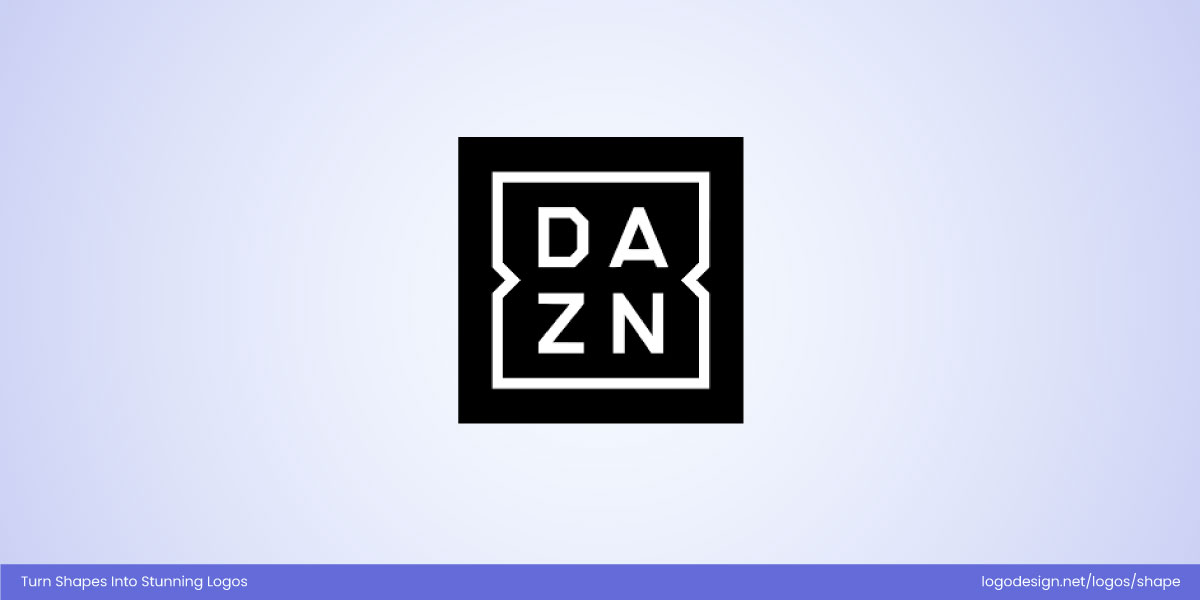
DAZN’s enclosed square frame and minimal typography reflect precision and focus in the digital streaming world.
3. Rounded Squares or Rectangles
Softening the edges adds approachability and balance. Rounded forms make geometric logos feel more human and modern while preserving their order. They’re common in digital brands and consumer tech.

ZoomInfo features a solid red square with subtly rounded corners and a white “Z,” blending professionalism with approachability.
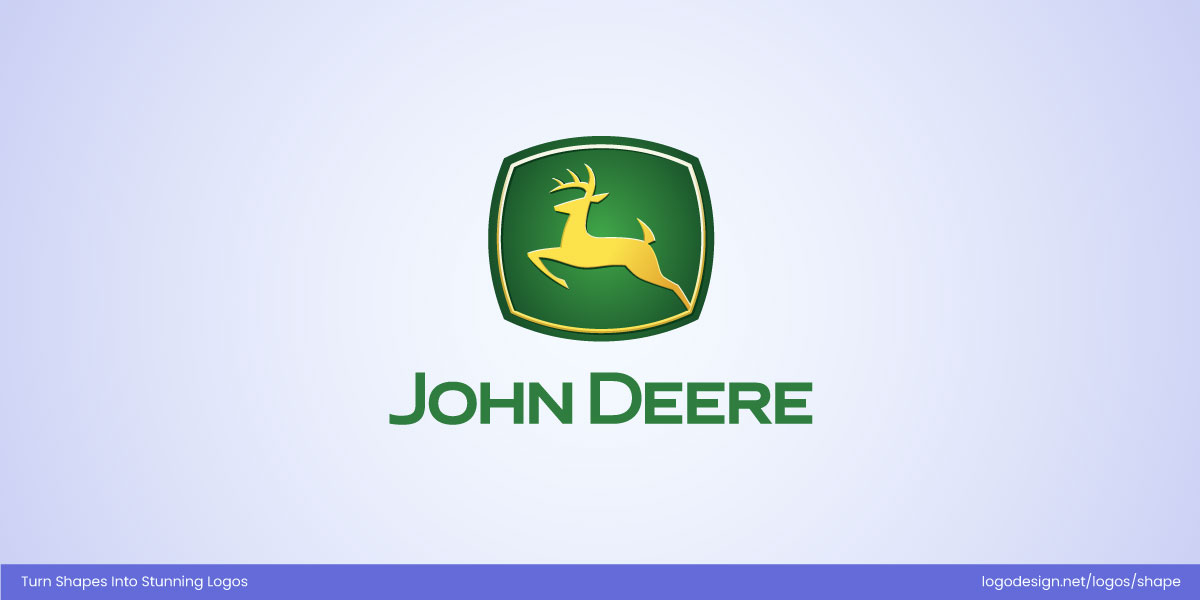
John Deere’s logo, enclosed in a rounded rectangular badge, adds warmth to its strong agricultural identity.
4. Layered or Stacked Squares or Rectangles
Multiple squares or rectangles layered or stacked together convey collaboration, progress, and adaptability. These logos often suggest systems working in harmony and are ideal for modern, growth-driven brands.

AVG uses overlapping rectangular shapes in different colors to symbolize integration and digital protection.

Bank of America also employs layered red and blue stripes in rectangular forms, which evoke unity, growth, and national identity.
5. Tilted or Dynamic Squares or Rectangles
Angled rectangles bring motion and innovation to otherwise rigid forms. The tilt adds a sense of energy and progress, making these logos feel modern and forward-looking.
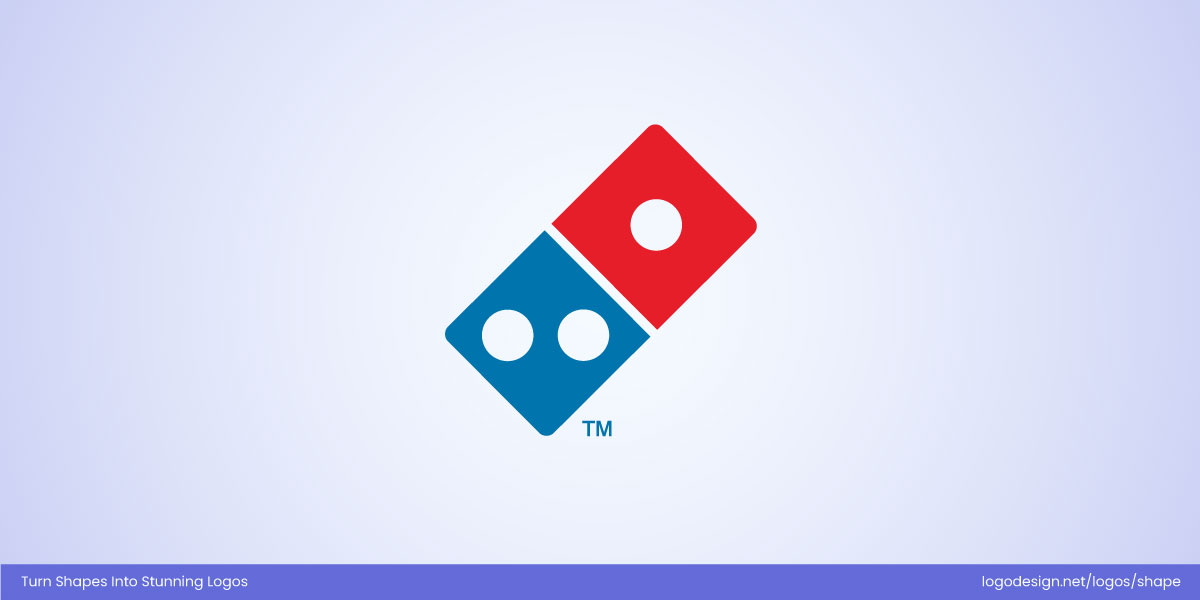
Domino’s Pizza incorporates a tilted rectangular block that gives its logo an active, three-dimensional look — suggesting delivery speed and dynamism.
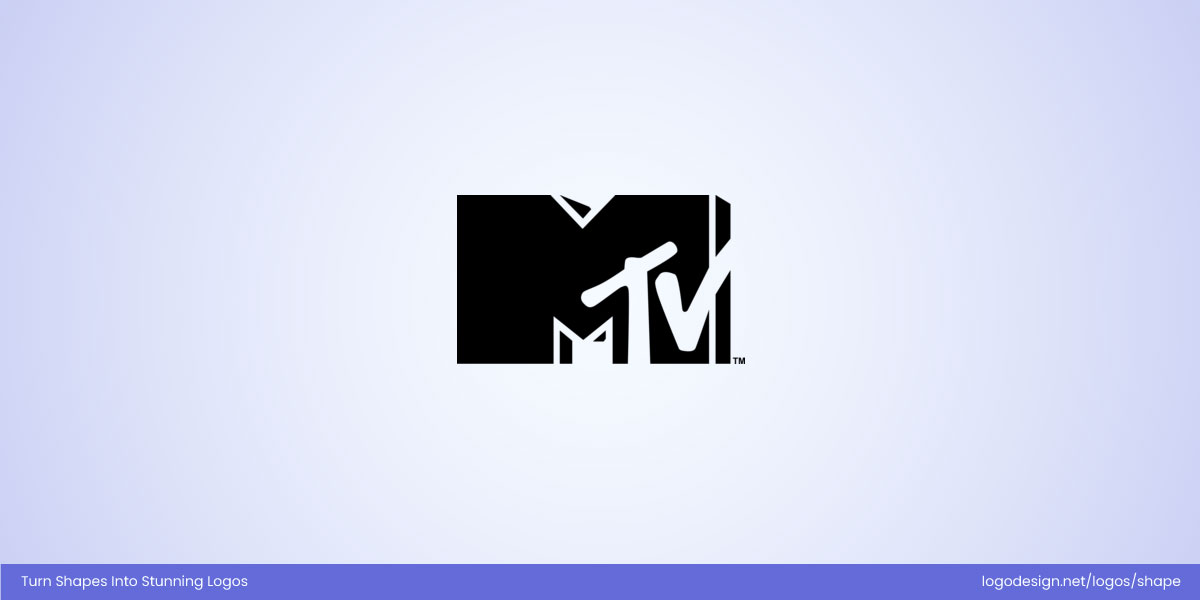
MTV’s iconic logo often features tilted rectangular elements that communicate creativity and cultural movement.
6. Divided or Grid-Based Squares
Logos built on grids or divided squares symbolize organization, precision, and logic. These are favored by data, design, and architectural brands that thrive on order and detail.
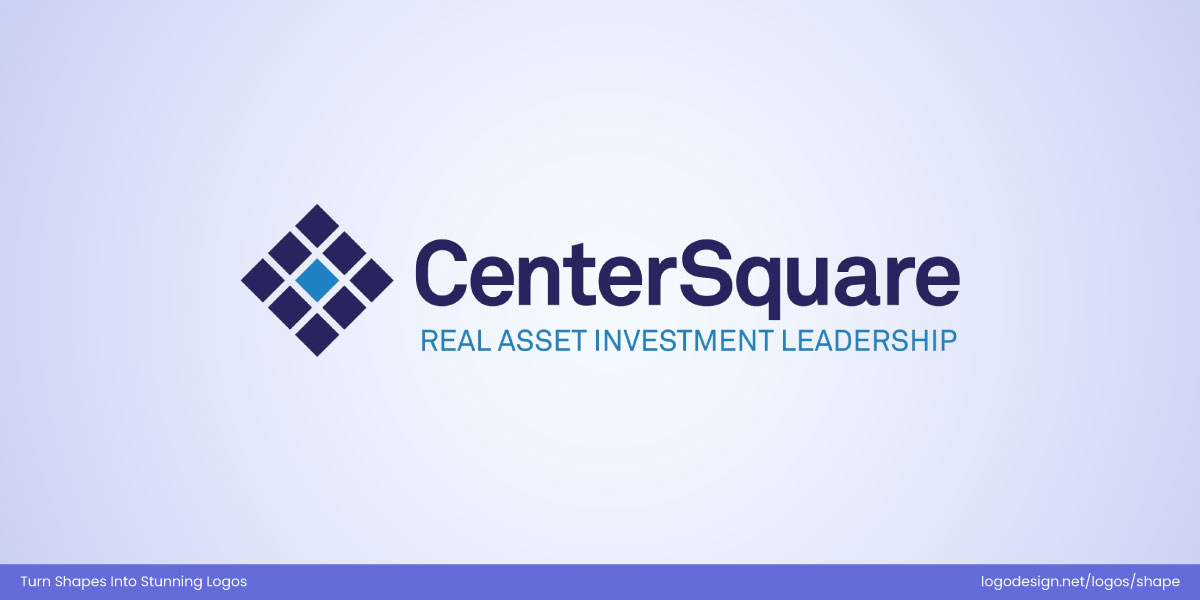
CenterSquare integrates a grid-like arrangement of square elements within its icon and typography, reinforcing structure and balance.
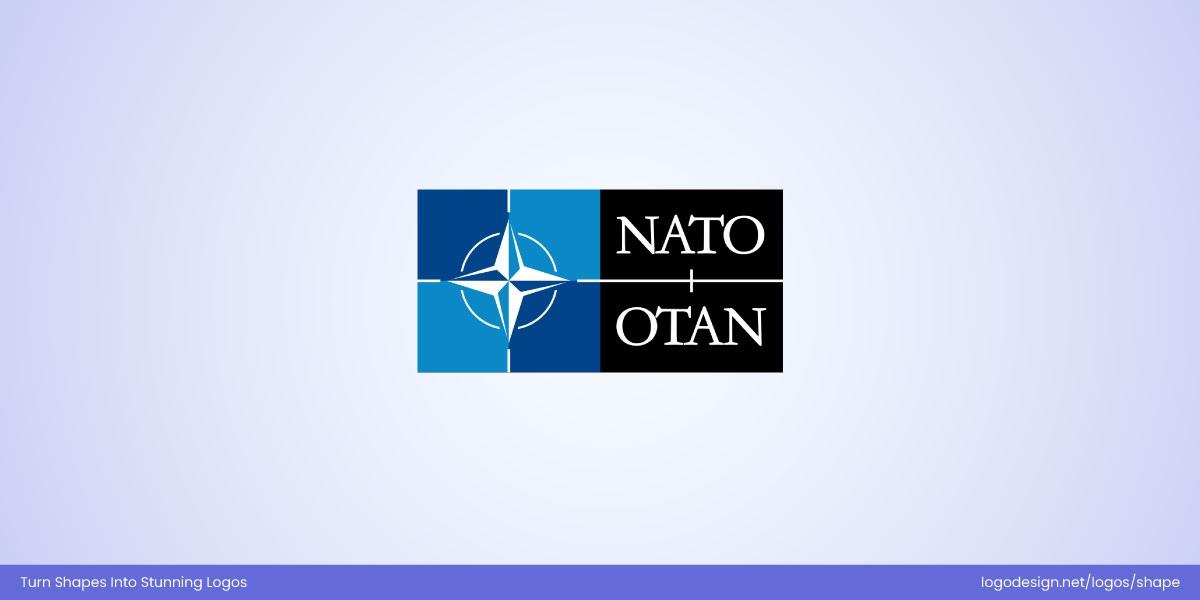
NATO’s emblem features a divided square backdrop behind its compass symbol, representing global coordination and unity.
Design Tips for Creating a Square or Rectangle Logo
Designing a square or rectangular logo might initially seem simple. After all, you’re working with the most structured shapes in design. But getting them right takes finesse. Too much rigidity, and the logo feels lifeless; too little structure, and it loses its strength. The challenge lies in balancing order with creativity.
Below are five design tips that will help you create a logo that communicates reliability without sacrificing personality.
1. Balance the Proportions
Symmetry and alignment are the foundation of strong geometric design. A square or rectangular-shaped logo design should feel anchored, with every element looking purposefully placed. Maintaining consistent spacing in the logo around the text or icon helps avoid visual tension, while thoughtful scaling ensures it seems stable on any medium. When the proportions are balanced, the eye reads the mark as trustworthy and deliberate rather than forced.

The National Geographic logo demonstrates perfect proportional balance. A simple yellow rectangle frames the name. It’s clean, structured, and instantly recognizable. The rectangular shape mirrors the look of a camera frame or TV screen that reinforces its association with discovery and perspective without feeling overly rigid.
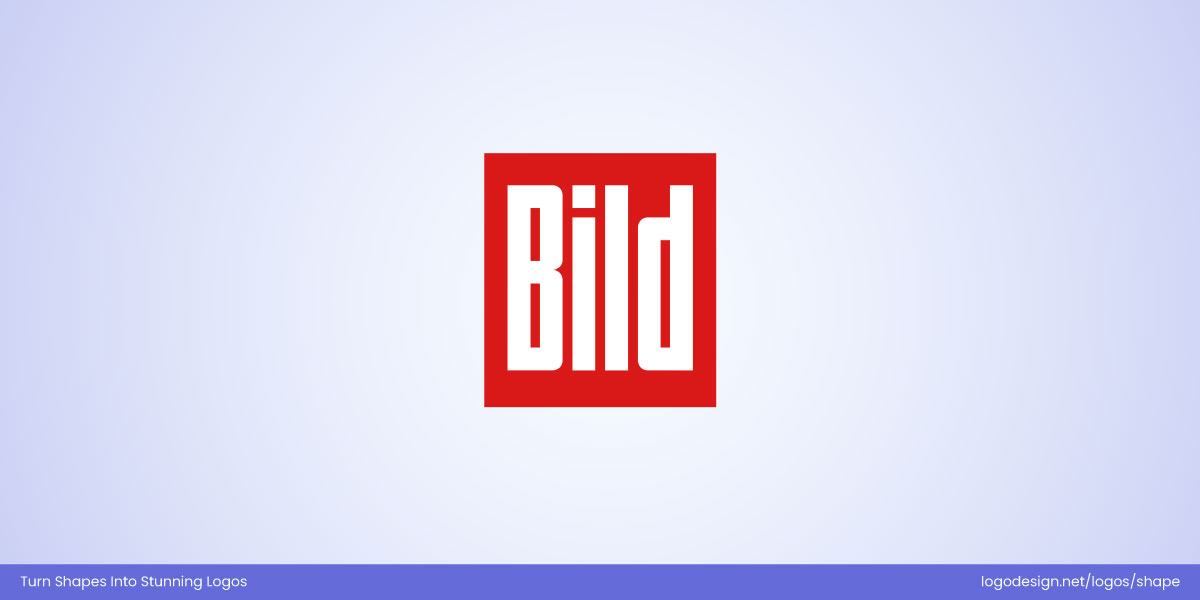
The BILD logo also exemplifies proportional harmony. Its bold, white wordmark sits perfectly centered within a solid red rectangle, creating a confident and unmistakable identity. The symmetry between text and frame gives it a sense of authority and structure — ideal for a news outlet that wants to convey clarity, order, and trustworthiness amid the chaos of headlines.
2. Use Color Strategically
Color plays a vital role in giving geometric logos personality. Because square and rectangular shapes already suggest strength and discipline, color can help soften or energize the design depending on the brand’s tone. A neutral palette can signal professionalism, while bright hues can make a structured logo feel approachable and current. Keeping the logo color trends in mind can also help.
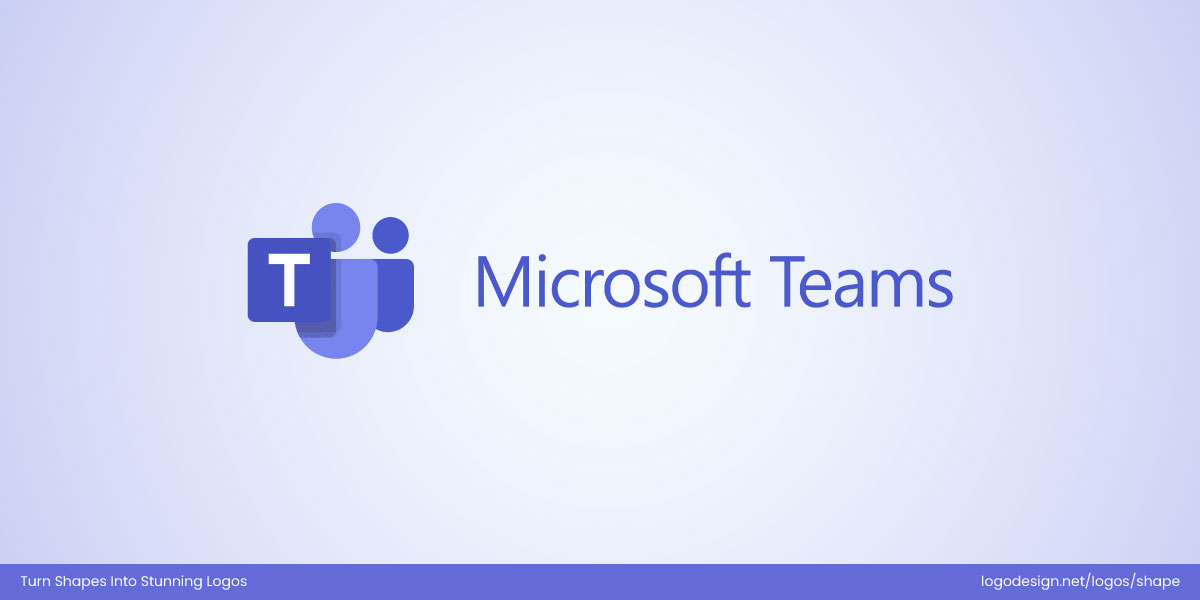
Microsoft Teams uses a square in its logo with soft, blended blues that make it feel friendly and collaborative rather than corporate. The cooler tones align with its productivity focus, while the layered structure reinforces organization and teamwork. It’s proof that color can humanize even the most geometric designs.
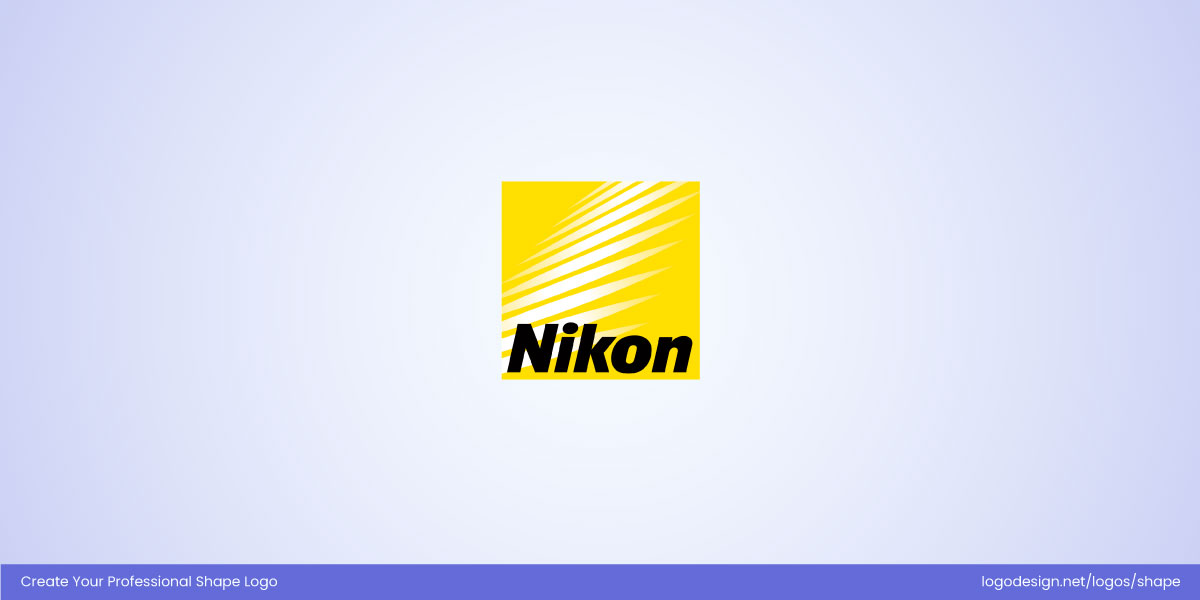
Nikon’s burst of yellow gradients behind its wordmark is a classic case of color used strategically. The color choice injects warmth and energy into what could otherwise be a rigid geometric frame. Yellow conveys optimism and innovation, perfectly fitting Nikon’s creative and tech-driven identity.
3. Incorporate Negative Space
Negative space in logos is an invisible element that can make a geometric design feel light, open, and memorable. In square and rectangular logos, it prevents the mark from feeling boxed in or too dense. Cleverly using the surrounding or internal white space creates contrast, depth, and even hidden symbolism that keeps the logo engaging.
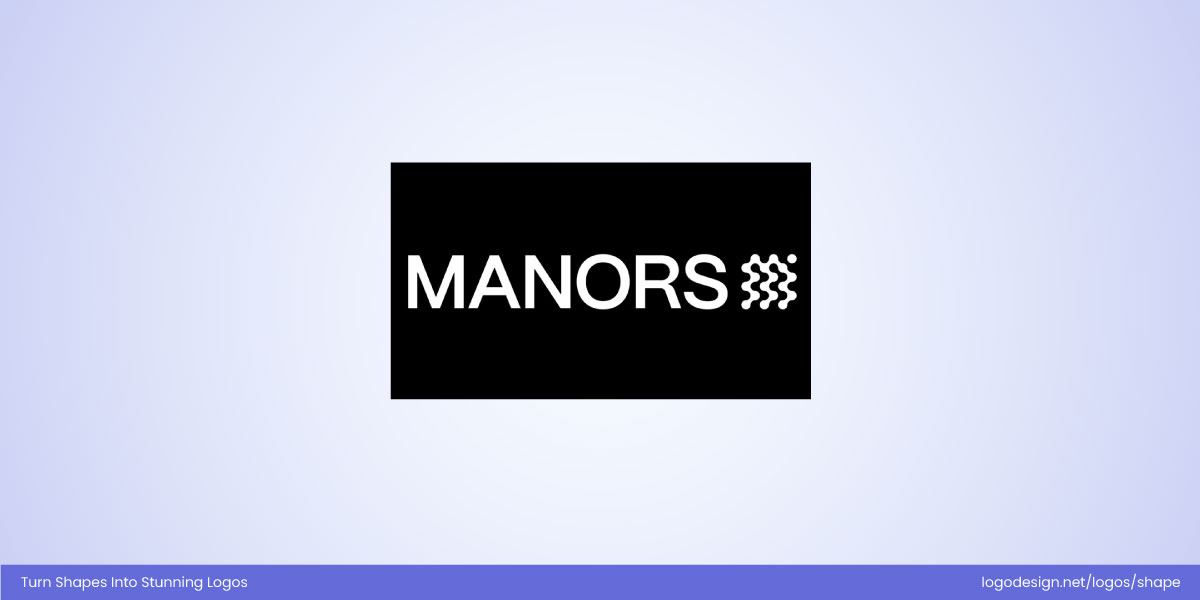
The O logo is a great example. Though it uses a rectangular wordmark layout, its clever use of spacing between letters and margins gives the design an elegant sense of openness. The balanced whitespace conveys calm sophistication — much like the sport itself — allowing the logo to feel grounded yet effortlessly refined.
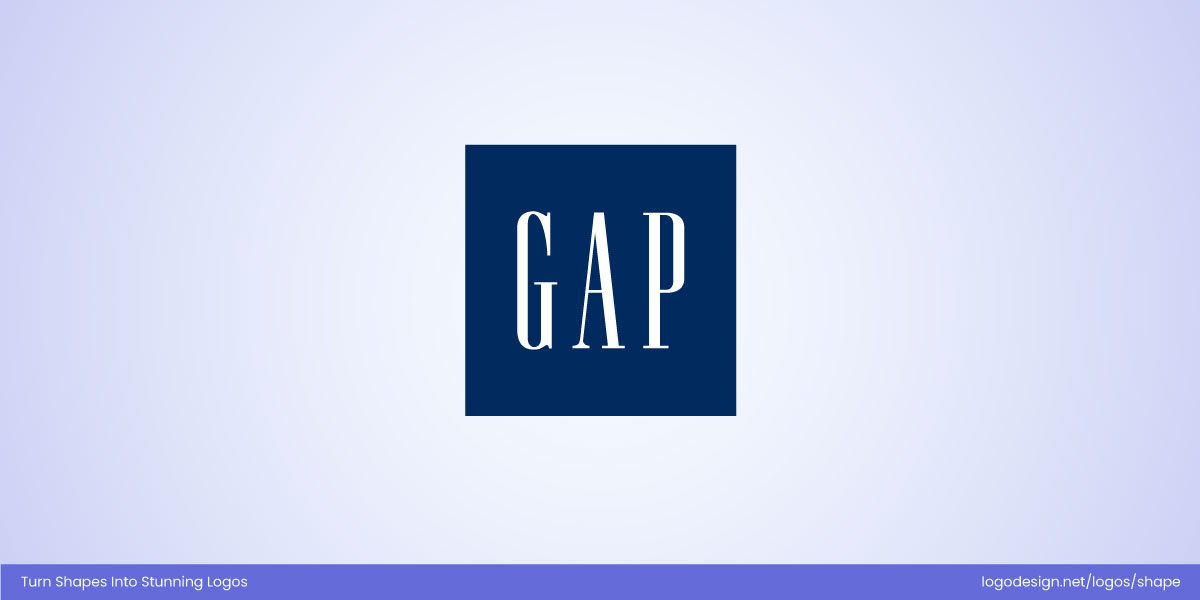
The Gap logo makes smart use of negative space within its square shape. The deep blue square acts as a solid frame, while the white letters stand cleanly within it, giving the logo breathing room and visual balance. This space around the typography prevents the mark from feeling boxed in and reinforces the brand’s classic style.
4. Pair with Appropriate Typography
Typography should echo the logo’s geometry. Clean sans-serif fonts pair beautifully with square or rectangular forms because their consistent weight reinforces precision and order. The key is to make the type feel integrated—not just placed inside a box but part of the overall architecture.
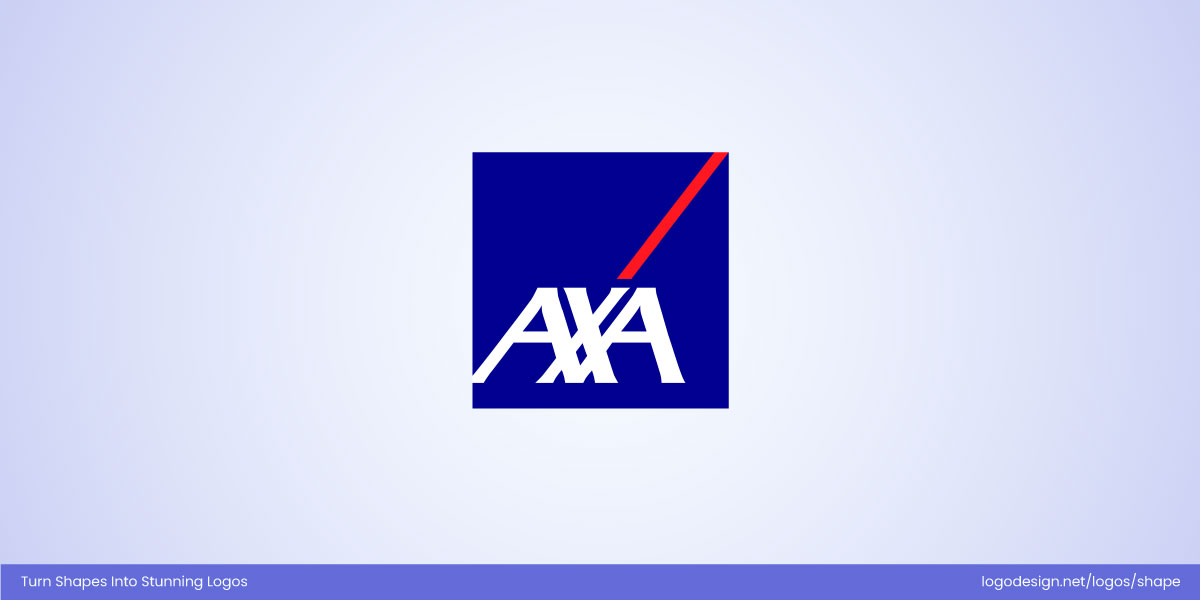
AXA’s logo uses a solid blue square background with the brand name written in white uppercase letters using a clean sans-serif font. The typography is bold and offers high legibility against the square’s solid field. The consistent stroke weight and font style echo the precision and clarity that make the wordmark and the badge feel unified.
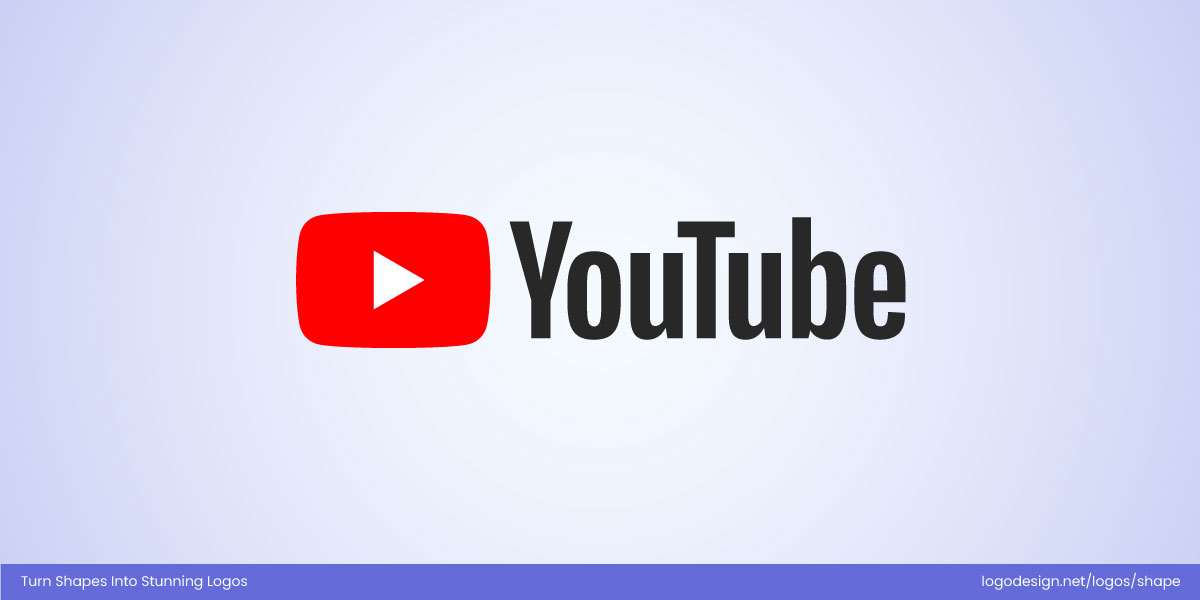
YouTube’s logo is another great example. It uses bold and clean typography beside a red rectangular play button, a shape almost everyone recognizes. The sans-serif type complements the geometry of the rectangle, making it feel integrated, not decorative.
5. Add Subtle Motion or Dimension
Even though squares and rectangles are static forms, a little depth or dimensionality can bring them to life. Gradients, shadows, or slight layering can add vibrancy and prevent the logo from feeling flat. This approach is especially effective for digital-first brands, where a logo needs to adapt across dynamic screens and interfaces.

The Flipboard logo is a befitting example. Its bold red square with a white geometric “F” inside gives the illusion of layered panels—a clever nod to the app’s flipping magazine-style interface. The interplay of solid shapes and subtle negative space makes the mark feel active and three-dimensional, even though it’s built from flat geometry.
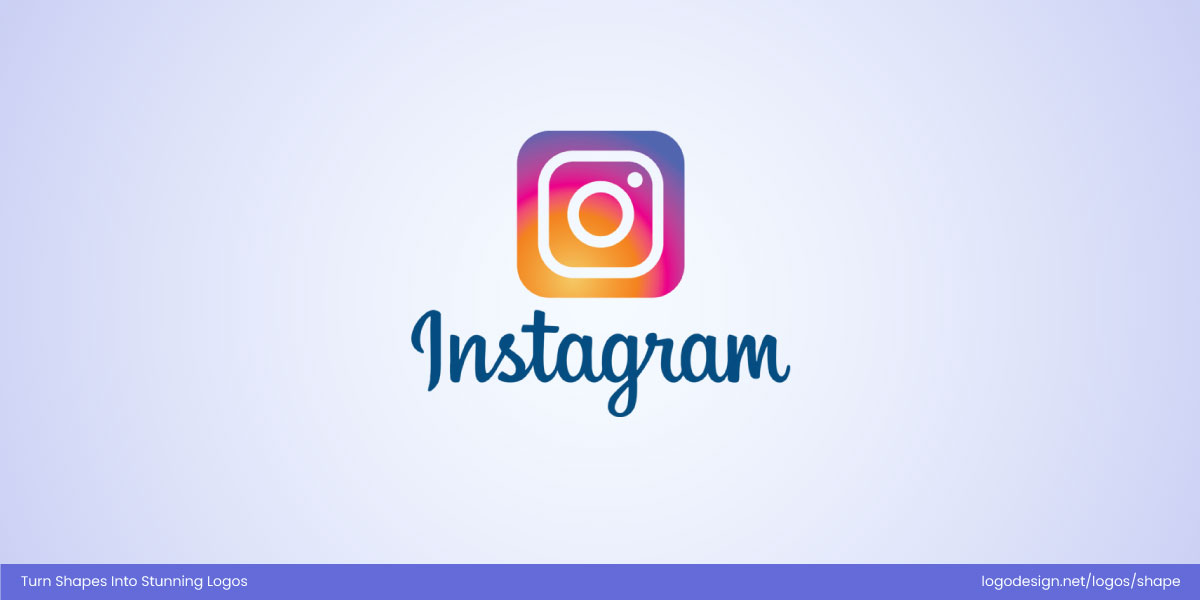
Similarly, the Instagram app icon uses a rounded square form filled with a radiant gradient that subtly shifts from pink to orange to purple. This depth of color gives the logo a sense of warmth and liveliness. It’s a reminder that even within strict forms, motion can be suggested through color and light.
When to Use (and Avoid) Square or Rectangle Logos
Square and rectangle-shaped logo designs are the backbone of structured design. But like any design choice, they’re not one-size-fits-all. Knowing when to lean into their geometry (and when to stay away) can make or break your brand’s first impression.
• Use Square/Rectangles When:
Your brand’s identity revolves around reliability, structure, and professionalism. These shapes are perfect for industries that rely on trust and consistency like finance, technology, architecture, or education. The even sides and right angles project a sense of order and control, showing that your brand is dependable and precise.
• Avoid Square/Rectangles When:
Your brand personality leans toward playfulness, creativity, or fluidity. If you’re building a brand that values imagination or emotion, such as a children’s brand, a fashion label, or an art studio, square or rectangular logos might feel too rigid. In those cases, circles or triangles are a better fit.
Squares and rectangles anchor your design; they’re great for stability, not spontaneity. If your message is “we’ve got you covered,” these shapes are a perfect match. If it’s “we think outside the box,” well… maybe skip the box entirely.
Key Takeaways
- Square and rectangular logos project stability, trust, and order, traits that make brands look dependable and professional.
- Their balanced geometry and symmetry create a strong visual foundation that feels deliberate and grounded.
- These shapes are especially effective for industries like finance, technology, and construction, where structure and reliability matter.
- While excellent for structured brands, they’re less suited to playful, creative, or organic identities.
- Clean lines and consistent spacing make the design look organized and easy to read at any scale.
- Negative space, strategic color, clean typography, and subtle depth all work together to keep square and rectangular logos balanced, approachable, and visually engaging.
- Their versatility makes them ideal for app icons, signage, and packaging with minimal redesign.
